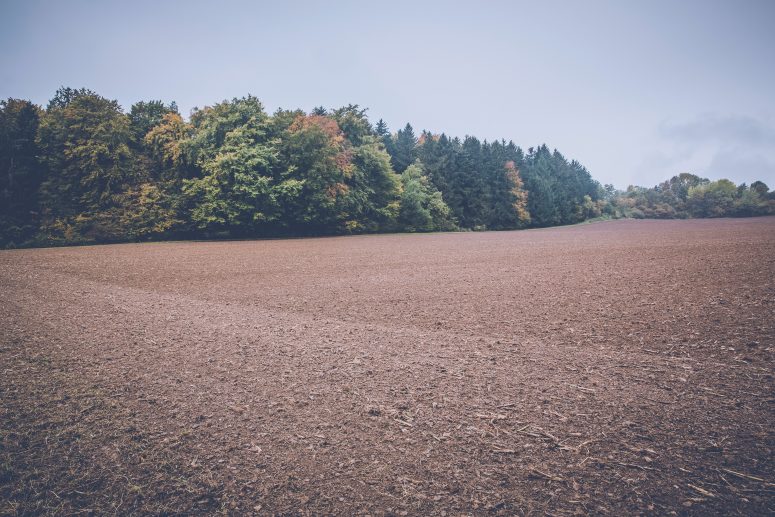To understand how land value is appraised the first thing you need to ask yourself is if a land appraisal is necessary. If you’re planning on building a new home, it’s a good idea to get a professional opinion about the lot value before you sign on the dotted line. Appraisals can also be helpful when trying to determine if a particular piece of land will meet your business needs or your family’s needs.
When you have land that is for sale or you’re about to buy some, you should make sure that you get a proper valuation on it first. Appraisals aren’t terribly expensive, but it’s a good idea to make sure that you understand what they’re looking for in order to give them an accurate value.
Land appraisal helps you determine the potential market value of a piece of land. Having one done before you sell land helps you get the most for your money. Likewise, if you can have an appraisal done on land you hope to buy, you can hopefully be in an informed position to negotiate a better deal.
Two Kinds of Properties
According to Fool, ascertaining property value happens for two different kinds of properties. The first is improved properties, which already have commercial or residential structures and applications built upon them. Such properties are easier to value since it’s just a matter of comparing them to similar properties in the local area that have sold recently.
The second is unimproved properties, also known as vacant lots that have nothing built on them. They might also have things built on them that have fallen out of use, into a state of disrepair, or would otherwise need total removal. Determining the appraised value of land like this is a lot more sophisticated process than just looking at comps. Rather than seeing what is present and available, vacant lot appraisal might focus more on potential. What use can this land provide to its owners or users? What would the best use of such land be if multiple usages are possible?
The Purpose Behind Vacant Land Appraisal
If you’re looking to buy a vacant lot, the right appraisal helps you avoid overpaying for something that would leave you with buyer’s remorse. Sellers tend to price lots higher than market value in order to make the most money, and often, sellers seriously overvalue them. For that matter, you might find out that a lot isn’t worth it, price-wise or due to other issues. In such cases, a robust appraisal can help you avoid buying something you should stay away from. You might not even be able to get financing for certain properties without a good appraisal.
Best and Highest Use
Vacant land is like a blank canvas. Depending on the local zoning regulations and building ordinances, if there are any, then you might be able to do anything with a certain lot. You could open a summer camp, build a warehouse, construct an industrial facility, subdivide it for a housing project, or put up a retail center. Appraisals can help you identify the specific possible uses for a lot but also identify which one would be what is known as the highest and best use of a particular piece of property.
Appraisers often apply four criteria in determining this:
- 1) Is a potential use permissible from a legal standpoint? Zoning requirements can limit specific land uses. Something zoned as commercial might not be usable for a residential subdivision.
- 2) Is a possible use possible physically? The land’s accessibility, size, shape, and topography might not align well with owner intentions. A hilly piece of terrain might not be suitable for a shopping mall, and floodplain restrictions can prevent residential development at times.
- 3) How does financial feasibility come into play? Building a gas station on a rural two-lane road without enough traffic or demand to support the business could spell fiscal disaster down the road.
- 4) What use is most profitable? If the intention in buying the property is commercial, what sort of business or businesses would make sense can dictate things. Opening a used car lot on a road that already has several might water down the market too much to be of any value.
How Much Is a Square Foot of Land?
According to HomeLight, The National Association of Realtors did a land market survey in 2019 placing the median price of 1 acre of land at approximately $5,500. This represented an increase of $1,000 from 2018.
Since 1 acre is equal to 43,560 square feet, that puts the median value of a square foot of land at just under $0.13. Before you remark how cheap that is though, keep in mind that that’s just the national median from 2019. Market values fluctuate all the time, and most pricing is determined by the local market a lot more so than the national average.
For instance, the $5,500 median acre price is for non-irrigated agricultural land. Land useful for agriculture that is irrigated can fetch nearly twice that price, whereas ranch land would go for less. Vacant lots designated for timber or recreational use might be only half as valuable. On the other hand, residential spaces might go for five times as much.
Factors That Determine Land Value
Accessibility: The frontage along a road is one of the most dominant pricing factors in any valuation. The more acres that touch a road, the more accessible the property is. Convenience adds value.
Amenities: Some factors impacting land value can be things that are rather intangible, including being on a quiet street or having a particularly good view. However, these are only a plus if they don’t interfere with the usability of the land. A huge, gorgeous tree that your kids or grandkids might love climbing on could be a selling point but not if you have to chop it down to build there.
Flooding Potential: The number of citizens living in 100-year flood zones is going up, and insurance prices go up with that. In some cases, insurance is seriously limited or cost-prohibitive. If the risk of a flood is too high, the land value may plummet given the risk and low demand.
Shape: Rectangular lots are popular, but not always possible. Imagine trying to build a home on a triangle slice that’s wider in the front; your backyard would be smaller, shrinking to a narrow point.
Size: If an acre of land is valued at $5,500, then four would be $22,000, right? That’s not the case, which is bad for sellers but good for buyers. The more acres there are, the lower the unit price gets.
Topography: This would be the geographical makeup of a lot. A vacant lot might look cheap and like a good deal until you find out it’s swampy or a flood plain you’re not allowed to even build on.
Trees: According to RethinkRural, one factor that has to be considered in many vacant lots is the timber potential. If the land has trees, do they have property value as aesthetic appeal? Or would they need to be removed? If removed, do they have value as timber that would potentially offset the cost of harvesting and removal of all the trees? Or would it just be a removal cost? The age of trees can impact their current and future values, as young trees might not fetch as much market value as trees allowed to grow another decade or so.
Utilities: These are practical considerations, such as hookups for electricity, sewer, and water. When such elements aren’t already in place, buyers have to arrange for them. Projects like that easily run into the five digits. Permit processes can also take months.
Zoning: Not all land is zoned, but most is, which means that the local government has classified it for only particular uses. Common ones include:
- Agricultural
- Commercial
- Light commercial
- Light industrial
- Multi-unit residential industrial
- Schools
- Single-family residential
Do You Need Professional Land Appraisal Service?
Do you need a land appraisal done? Do you know how much is a square foot of land in your local market? Call us at 1-801-882-2292 or request a free quote today!


Leave a Reply